Sandals

The earliest known shoes are sandals dating from approximately 7,000 or 8,000 B.C., found in the Fort Rock Cave in the US state of Oregon. In 1938.
Oldest Leather Shoe
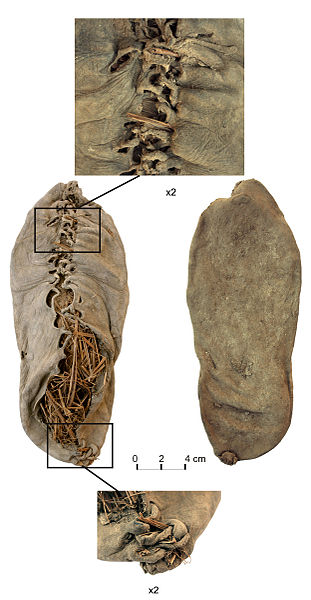
The world's oldest leather shoe, made from a single piece of cowhide laced with a leather cord along seams at the front and back, was found in a cave in Armenia in 2008 and is believed to date to 3,500 B.C.
Iceman Shoe
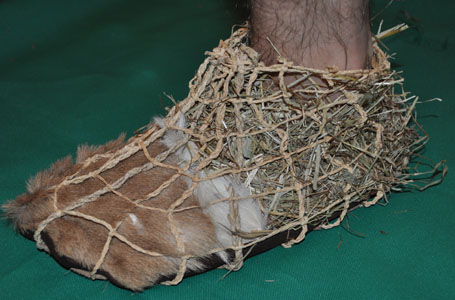
Otzi the Iceman's shoes, dating to 3,300 BC, featured brown bearskin bases, deerskin side panels, and a bark-string net, which pulled tight around the foot.
Moccasin
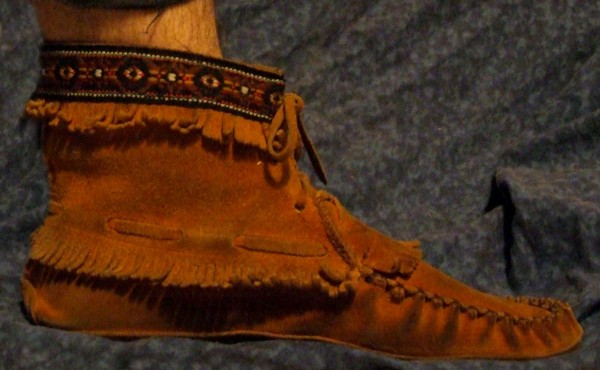
Many early natives in North America wore a similar type of footwear known as the moccasin. These are tight-fitting, soft-soled shoes typically made out of leather or bison hides. Moccasins were not designed to get wet, and in wet weather and warm summer months, most Native Americans went barefoot.
Thong Sandals
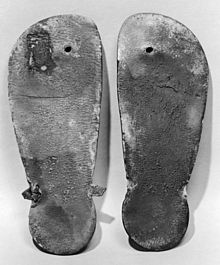
As civilizations began to develop, thong sandals were worn. This practice dates back to pictures of them in ancient Egyptians murals from 4,000 B.C. Thong sandals were worn by many civilizations and made from a wide variety of materials.
Thong Sandals
- One pair found in Europe was made of papyrus leaves and dated to be approximately, 1500 years old. They were also worn in Jerusalem during the time of Jesus Christ.
- The Masai of Africa made them out of rawhide.
-
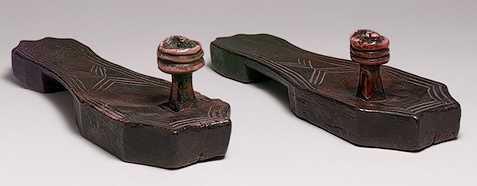
In India, they were made from wood. - In china and Japan rice straw was used to make thong sandals.
- The leaves of the sisal plant were used to make twine for sandals in South America, while the natives of Mexico used the yucca plant.
Espadrille
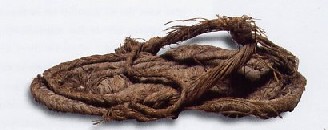
A common casual shoe in the Pyrenees during the Middle Ages are espadrilles. These are sandals with braided jute soles and a fabric upper portion, and often include fabric laces that tie around the ankle. The shoes originate in the Catalonian region of Spain as early as the 13th century, and were commonly worn by peasants in the farming communities in the area.
Patten Shoe
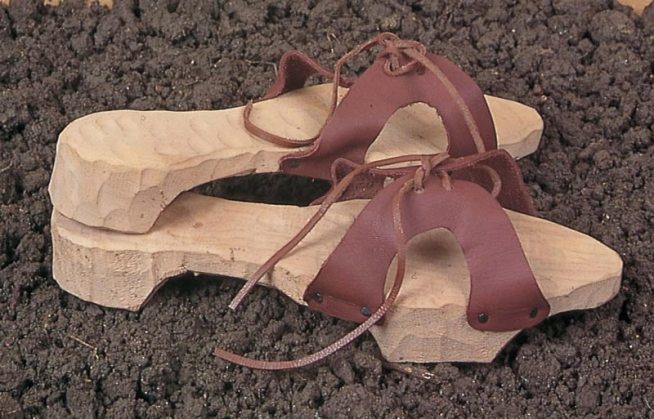
By the 15th Century, pattens became popular by both men and women in Europe. These are commonly seen as the predecessor of the modern high-heeled shoe, while the poor and lower classes in Europe, as well as slaves in the New World, and were barefoot.
Crakow Shoe
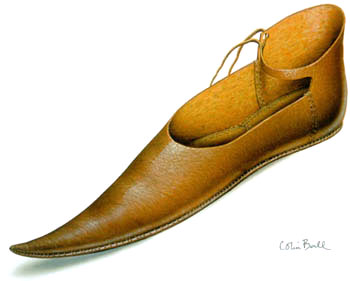
In the 15th century, the Crakow was fashionable in Europe. This style of shoe is named because it is thought to have originated in Krakow, the capitol of Poland. The style is characterized by the point of the shoe, known as the "polaine", which often was supported by a whalebone tied to the knee to prevent the point getting in the way while walking.
Chopine Shoe
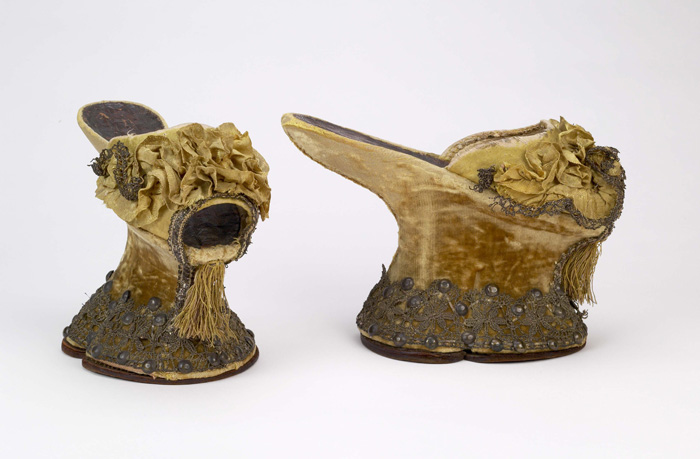
Also during the 15th century, chopines were created in Turkey, and were usually 7-8 inches (17.7-20.3 cm) high. These shoes became popular in Venice and throughout Europe, as a status symbol revealing wealth and social standing. During the 16th century, royalty started wearing high-heeled shoes to make them look taller or larger than life, such as Catherine de Medici or Mary I of England. By 1580, even men wore them, and a person with authority or wealth was often referred to as, "well-heeled".
Turn Shoe Method
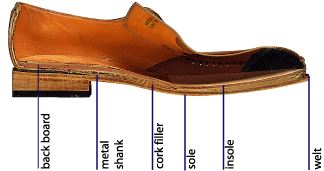
Many medieval shoes were made using the turnshoe method of construction, in which the upper was turned flesh side out, and was lasted onto the sole and joined to the edge by a seam. The shoe was then turned inside-out so that the grain was outside. Some shoes were developed with toggled flaps or drawstrings to tighten the leather around the foot for a better fit. The turn shoe method was replaced by the welted method around 1500.
Modern Shoe
Eventually the modern shoe, with a sewn-on sole, was devised. Since the 17th century, most leather shoes have used a sewn-on sole. This remains the standard for finer-quality dress shoes today. Until around 1800, shoes were made without differentiation for the left or right foot. Such shoes are now referred to as "straights". Only gradually did the modern foot-specific shoe become standard.
Since the mid-20th Century, advances in rubber, plastics, synthetic cloth, and industrial adhesives have allowed manufacturers to create shoes that stray considerably from traditional crafting techniques. Leather, which had been the primary material in earlier styles, has remained standard in expensive dress shoes, but athletic shoes often have little or no real leather. Soles, which were once laboriously hand-stitched on, are now more often machine stitched or simply glued on. Many of these newer materials, such as rubber and plastics, have made shoes less biodegradable. It is estimated that most mass-produced shoes require 1000 years to degrade in a landfill. In the late 2000s, some shoemakers picked up on the issue and began to produce shoes made entirely from degradable materials.

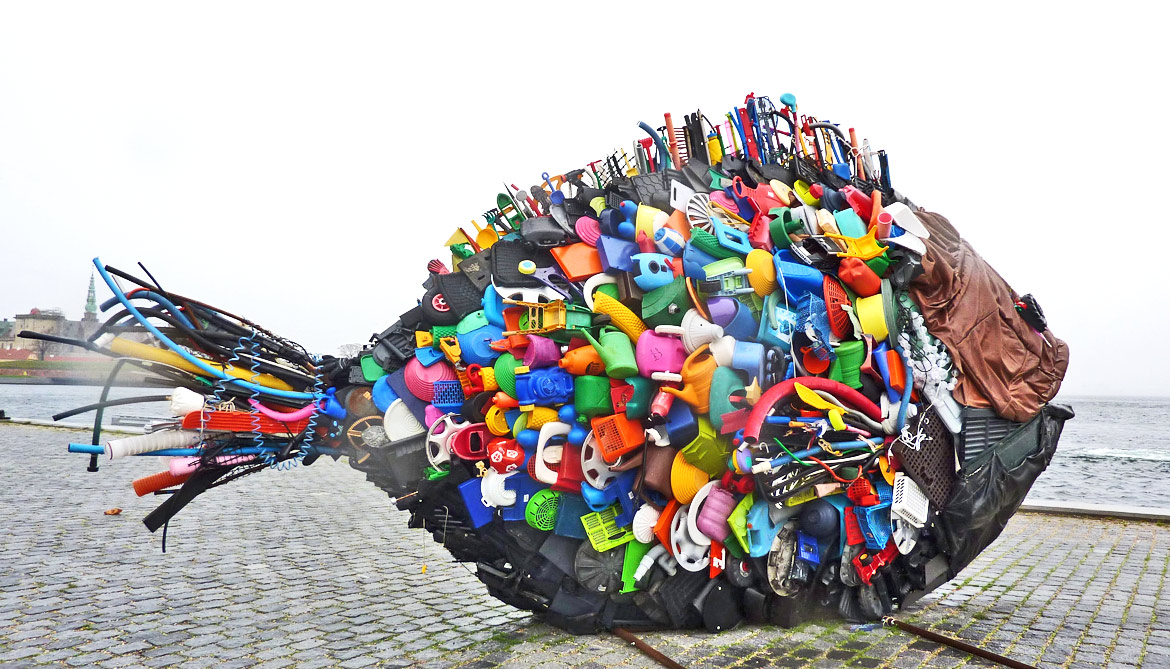

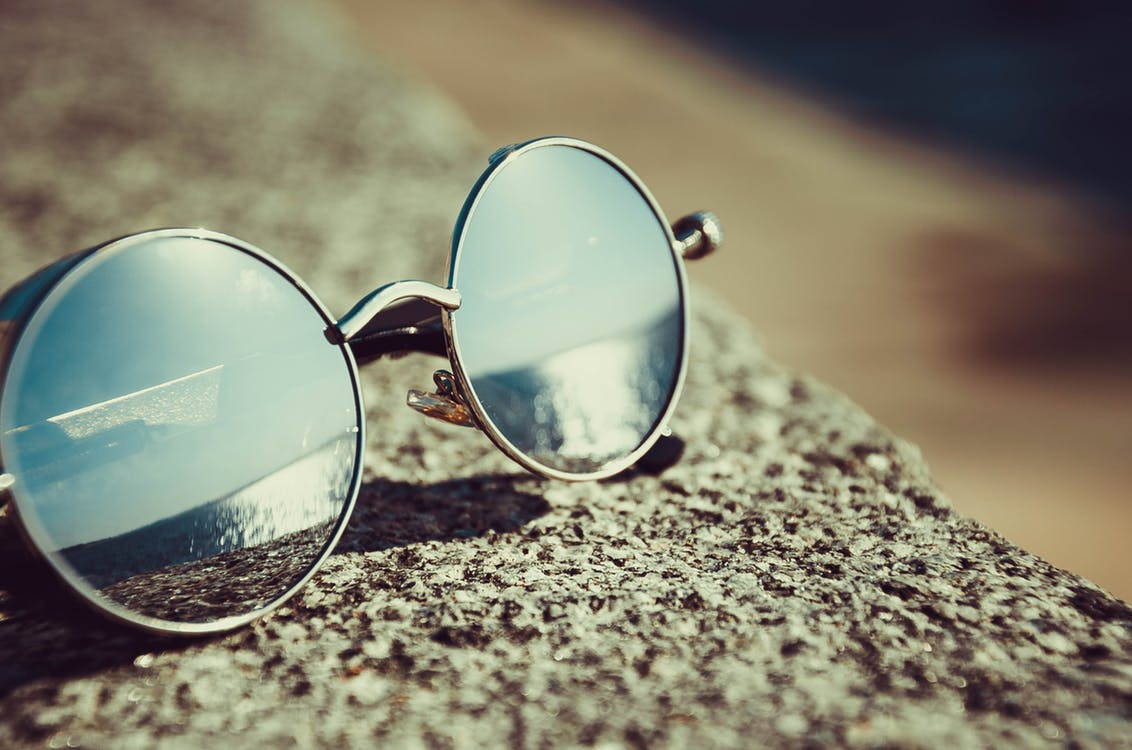



















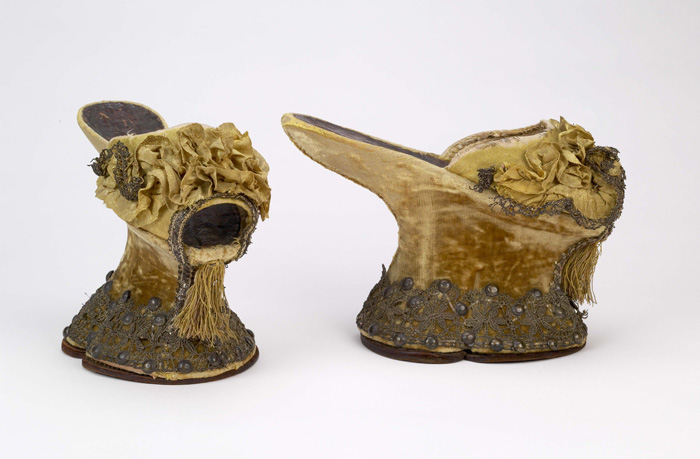

Comments